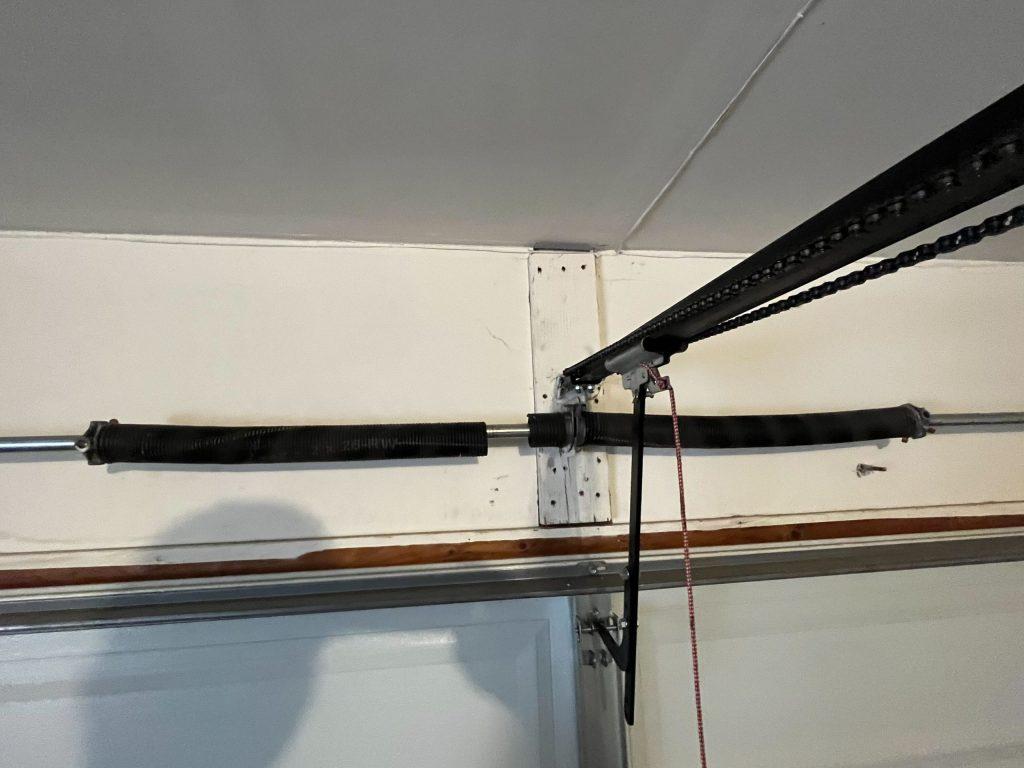How To Tell If A Garage Door Spring Is Broken? Your garage door is a marvel of modern convenience, but it relies on several critical components to function correctly. Among these, the garage door spring is a crucial element, as it bears the weight of the door and ensures smooth operation. However, over time, garage door springs can wear out or break, leading to issues with your door’s functionality. In this article, we will explore the signs and methods for determining whether tell if a garage door spring is broken, empowering you with the knowledge to address this common problem.

Understanding Garage Door Springs
Before we delve into how to identify a broken garage door spring, let’s familiarize ourselves with the two main types of springs typically used in garage doors:
1. Torsion Springs:
- Mounted above the garage door.
- Wind up and store mechanical energy when the door is closed.
- Unwind and release this energy to raise the door.
2. Extension Springs:
- Located on both sides of the door, often parallel to the tracks.
- Stretch and contract to lift and lower the door.
- Commonly used in single-car garage doors.
Signs of a Broken Garage Door Spring
- Door Doesn’t Open or Closes Unevenly:
- One of the most apparent signs of a broken spring is when your garage door won’t open at all.
- If the door does open, it may do so unevenly, with one side higher than the other.
- Loud Bang or Snap:
- You might hear a loud bang or snap when the spring breaks. This noise is a clear indication that something is amiss.
- Gaps in the Spring:
- Examine the spring closely. If you notice a separation or a visible gap in the spring, it’s a strong indicator that it’s broken.
- Crooked or Slanted Door:
- A crooked or slanted garage door, particularly when it’s not in motion, can be a sign of a broken spring.
- Difficulty Lifting the Door:
- If you’re struggling to lift the door manually, it’s likely due to a broken spring.
- Cable Issues:
- Check the cables on the side of the door. If they are loose or hanging, it could be due to a broken spring.
How To Check for a Broken Garage Door Spring
- Visual Inspection:
- Examine the springs carefully, looking for any gaps or signs of wear.
- Torsion springs may show a noticeable separation when broken.
- Extension springs may have a visible gap in the coils.
- Test the Balance:
- Disconnect the garage door opener and attempt to lift the door manually.
- If the door is heavy and difficult to lift, it’s likely due to a broken spring.
- Listen for Unusual Noises:
- If you hear any strange sounds when operating your garage door, it’s worth investigating further.
What To Do If You Suspect a Broken Garage Door Spring
If you suspect that your garage door spring is broken, it’s crucial to address the issue promptly to avoid further damage or safety risks. Here are the steps to follow:
- Do Not Attempt Repairs Yourself:
- Garage door spring replacement can be dangerous and should be handled by a trained professional.
- Avoid trying to fix it on your own, as the tension in the springs can cause injury.
- Contact a Professional:
- Reach out to a reputable garage door repair service to inspect and replace the broken spring.
- Avoid Using the Door:
- Until the spring is repaired or replaced, refrain from using the garage door to prevent further damage or accidents.
Conclusion
A broken garage door spring can disrupt your daily routine and compromise the security of your home. Recognizing the signs of a broken spring and taking immediate action is essential. While some homeowners may be tempted to tackle the issue themselves, it’s safer and more practical to seek professional assistance. By staying vigilant and addressing garage door spring issues promptly, you can ensure the continued smooth operation of your garage door and maintain the safety of your home.



Leave a Reply